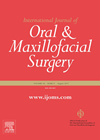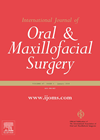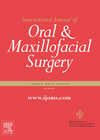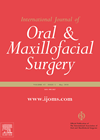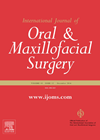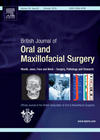
Journal Reviews
Wisdom teeth and mandibular osteotomies
This is a systemic review and meta-analysis from Italy and Brazil where they try to clarify the role of wisdom teeth and complications in a sagittal split mandibular osteotomy. Whilst, like many other papers, they outline the quality of evidence...
Effects on the nasal cavity and maxillary sinus after a Le Fort I osteotomy
This paper from Turkey divided 28 patients into three groups: those having a maxillary advancement osteotomy, those with a maxillary advancement and impaction, and those that underwent advancement with a yaw rotation. They found that pure advancement movement of the...
Piezoelectric saw reducing sensory disturbance in mandibular osteotomies
This paper from Seattle in the United States looked at 20 patients with a mean age of 19.9 +/- 3.2 years with a fairly standard surgical movement. They found that functional sensory recovery of the inferior alveolar nerve resulted in...
Antibiotics in orthognathic surgery
This paper from the Netherlands looked at 137 patients over a one-year period, 18 of whom had Le Fort I procedures, 68 bilateral sagittal split surgery, and 51 bi-maxillary surgery. A further 54 surgical procedures were undertaken, including 15 having...
Bone thickness and split pattern in mandibular osteotomies
This paper looked at 63 sagittal split ramus osteotomy sites. The type of split was classified according to the Plooij paper and bone measurements were taken at four sites. Of these sites, the thickness of the bone in one point,...
Hierarchy of orthognathic surgical stability
This study was designed as “an overview” of secondary studies and analysed 15 articles. Two procedures were considered highly unstable: a bilateral sagittal split osteotomy for clockwise rotation of the mandible with bi-cortical screw rigid internal fixation, and posterior maxillary...
Bone grafting in orthognathic surgery
In this systematic review of 48 articles the authors reviewed the complication, stability, aesthetics and healing of Le Fort I, sagittal split, chin and zygomatic osteotomies. They concluded that there was strong evidence that bone grafting promotes healing of a...
Soft tissue changes following maxillary osteotomy: comparison of three computer programmes
This small group of seven patients had a Le Fort I advancement maxillary osteotomy with vertical repositioning and alar base cinch sutures. They were assessed with cone beam CT’s three months preoperatively and one-year postoperatively. A clinical comparison between the...
Soft tissue changes following maxillary osteotomy, comparison of three computer programmes
This small group of seven patients had a Le Fort I advancement maxillary osteotomy with vertical repositioning and alar base cinch sutures. They were assessed with cone beam CT’s three months preoperatively and one year postoperatively. A clinical comparison between...
Tranexamic acid and blood loss in bimaxillary surgery
This is a randomised double-blind placebo-controlled trial from Thailand to clarify the most effective dose of Tranexamic acid in reducing blood loss during a bimaxillary osteotomy. They confirmed that the dose of 10mg per kg is the most efficacious and...
Surgery for class III malocclusions pharyngeal airway and sleep apnoea effects
Thirty-three patients from Brazil were assessed for obstructive sleep apnoea and hypopnoea syndrome pre- and six months postoperatively. The 33 patients were made up of nine having mandibular set back surgery, six maxillary advancement and 18 bi-maxillary surgery. They identified...
Hilotherapy for facial surgery patients?
Hilotherapy involves administering regulated cold compression through a facemask. The principle of this treatment involves cyotherapy as a traditional treatment for reducing inflammation, pain and swelling following trauma. It is believed that using hilotherapy (Hilotherm®), which uses a mask to...

